Few people incite hilarity or rage like Bill Zebub of The Grimoire of Exalted Deeds, which is a magazine straddling the line between humor about death metal and information about death metal. We were lucky enough to catch Bill on his portable phone as he zoomed between appointments at West Hollywood coffeehouses.
What do you think separates a metal band from a mallcore band, in attitude, music and philosophy?
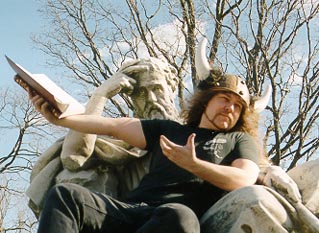
Mallcore? That is an absolutely hilarious word! I don’t actually know what mallcore is, but anything with “core” in it is guaranteed to be for blue collar mentalities and is generally a herd-type of music. Posermetal is for human cattle as well and it is just as fake. The worst sort of “core” music contains lyrics about society or government, yet the writer has no education.
Why should I care what an under-achiever thinks about a subject he knows nothing about? There is no philosophy in “core” music. Ridiculous opinionsshould never be confused with “philosophy”.
Do you think something needs to have value per se in order to be valuable? (Another way to ask: is context more important than construction to memes in a globally connected society)
It’s something I never really thought about. I suppose that forsome thing to be value-able it must have value, but does that imply an objective value, like “this gem has no flaw, therefore it has such-and-such market value”– or can value be subjective? If so, one man’s garbage is another man’s treasure. As for context being more important than construction, if I were to hide meaning in a simple sentence and then publish it on low-quality paper, does it have value because of my genius despite the cheap paper, and does the genius itself lose value if the reader cannot detect the meaning I have coded into the words?
The phrase sui generis is currently trendy among scenesters who like to describe why they like things which are at best trivially different from the other things around them. Do you think anything is sui generis (alone of its kind) or are all things influenced by what is around them in a continuous evolution? Do you think sui generis and the Christian concept of the soul are similar, or is sui generis something more natural only incidentally picked up by hipsters?
I have never heard that term,so I am removed from the scene a bit. William Blake said “There is nothing new under the sun” and there have been many times when I thought that I had an original idea, only to discover that my idea was formed long ago by someone else and that I just coincidentally dreamed up the same thing, or, if you believe in Jung’s collective unconscious, I just tuned into the data bank of the universe.
I don’t know what the Christian concept of the soul is. I think that Christians believe that you are on earth only once, but Christians are not aware that references to reincarnation were taken out of the gospels. Do you see a flaw in the belief of a soul only being incarnated once? How could a toddler who dies in acar crash possibly be judged worthy of entering the pearly gates when he/shehas not undergone the trials of adult life that could lead to indulging a sinful path and thereby meriting damnation, even though hell was really a codeword for an unclean area of Qumran which is very much on earth and not in the afterlife.
What do you like about video as opposed to radio?
You might also ask, if you were to lose a sense, would you rather lose hearing or sight? When I watch video it is usually to be entertained by a story, which I never use the radio for. Actually, I don’t ever listen to the radio. When I did listen to the radio a very long time ago it was because a local college station played underground music and that was my first taste of it. As I formed a particular taste, I found a lot of the metal programs to be composed mostly of fluff, and I noticed that most radio hosts tried to entertain the lowest common denominator, so they shyed away from playing long songs, doomy songs, or experimental songs. So an answer to your question can be that radio is far more superficial, and that with video I always have a choice and I am always in control. If you are asking which I would rather do, for I make videos and I am also a radio host, I don’t think I can choose one over the other because they both are outlets for me, and when I lose the chance to do one or the other I become very disappointed.
What got you into radio?
When I first heard that college radio show I actually planned to attend that college and get a show, which I accomplished. I don’t know anything about being a proper disc jockey — I never studied communication or broadcasting. The radio station was considered to be a club in the eyes of the college. But to me, it was my legacy.
What was the highest moment of realization that occurred to you while you were on the radio?
It may sound silly, but I realized that there is always a new listener every moment of the show. I just recently filled in for a talk show, and instead of playing music, I decided to play a joke on the usual host of that show and I pretended to be him, but without imitating his voice. I kept identifying myself as him, and I decided that I would be accepting calls if people had insults about Jesus, which the host would never do, and although there were callers who called me an impostor, many people were happy to call up and say that Jesus was a fag, and the following week all of the new listeners called up the real host and called HIM the impostor!
How often do you run afoul of the FCC?
I never break FCC rules. It would be foolish to irritate such a powerful organization.
What do you think of these radio personalities: Kasey Kasem, Howard Stern and Don Imus?
Of the three, I only heard Howard Stern, and there have been many times when I laughed out loud when I heard his show. But I never chose to listen to his show. I only heard it because someone else was playing it. If I am in my car I listen to cd’s. If I am at home relaxing, I listen to cd’s. I just think it’s funny that Howard Stern uses a pitch shifter to lower the pitch of his voice. I mean, everyone knows what he looks like, so the artificially deep voice isn’t fooling anyone.
If you could do an evangelical talk show, for which religion would you create it?
Ha! I once did such a show, but it was about Satan. I read things from the Satanic Bible, but in the enormously gay southern accent that I hate so much, and I irritated the hell out of everyone. Despite reading from the Satanic Bible, I talked about Satan as an actual being that exists, sort of like he is your best friend, which I am sure would piss of LaVeyans, but I was doing the show to be an asshole.

What do you think all religions have in common, if anything?
I saw a show in which some kid in Hawaii was really sick, and his mother was foolishly doing all of these silly religious things because Hawaii has some sort of silly primitive religion. But I have seen Christians do equally absurd things. I suppose the one thing that all religions that I know about have in common is that they provide a stupid way for a weak person to accept suffering. Just fuckin’ deal with it! What’s so hard about that? Or should I say, what’s so hard about realizing that you’re fucked? Why do you need to have grandiose delusions? Does it really make it easier?
Why do we call Christianity “western” religion if it originated in the Middle East?
Perhaps because Constantine stripped its origins and westernized it. By the way, he was never a believer. He remained a pagan until his death.
If you got a PSA for an Al-Qaeda recruitment drive, how would you embellish it?
You must have E.S.P. I made such a fake PSA, which did not go over very well. But if I ever had one that was real I probably wouldn’t need to embellish it because it would probably beloaded with enough juicy hot buttons. To take it one step further, I would honestly never read a real PSA like that because I would never want to be on an F.B.I. watch list. I don’t defy people who are in power.
Two wise men are sitting in a meadow. A leaf slowly falls from a tree. One says, “how appropriate.” The other says, “how natural.” Why are they both wrong?
If they are wise men, it is not for me to judge if they are wrong, for I am foolish.
What do you think is the ultimate solution to humanity’s wars and crises arising from religious, social, economic, racial, and intellectual inequalities?
Total death is the only way for us to be equal, for while we live there is no equality. There are retards and there are geniuses. Only an egalitarian would consider them equal. There are people who lack imagination, and there are people who are vastly creative. Which group has the advantage? There are intelligent people who have an emotional block — they can penetrate all other riddles yet they cannot see the idiocy of their beliefs. There will always be conflict as long as there is life.
do you think it is possible for christianity to have a secular component?
The only opinion that I really care to share about Christianity is that it is harmful to mankind.
If you were Osama Bin Laden and had to hide somewhere in NYC, where would you hide?
I am not very familiar with new york, but I would probably try out the idea that the bestplace to hide is in plain sight. I would probably pretend to be a homeless person and wash the windshields of cars and mutter incomprehensibly. No one wouldever suspect me even if I wore the usual bib-laden-actionwear.
Do you do any drugs?
No. I drink a lot of beer, and alcohol is a drug, but you probably meant illicit drugs, right?
Have you ever had sex with a non-human?
A non-lifeform, yes. I couldn’t help it. I had to try out a blow-up doll–and before you ask, yes, it was of a human girl.
Do you like any black metal bands? If so, which?
I’ve quite enjoyed Thy Primordial’s “Heresy of An Age of Reason” and I like certain songs by SadLegend, Immortal, Mayhem, Satyricon, and Darkthrone. I’m sure there are others. But that is not my usual fare. I only listen to that sort of stuff as a side dish.
Many say that goregrind – a fusion of simple death metal and violent grindcore – is overrated. What is your feeling on the subgenre?
I’m not sure if I ever heard such music. Maybe I have. I can’t see how anything with “grind” in it is over-rated because I have never seen or heard anyone raving about that stuff. My friends who are metal merchants stay clear of those albums, so it doesn’t seem to sell well, and if it doesn’t sell well then I can’t really think that it is over-rated. But then, it could very well be that I never actually heard a “goregrind” band. Did you make that up?
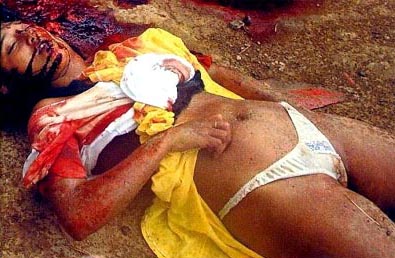 How many copies of The Grimoire do you distribute each month?
How many copies of The Grimoire do you distribute each month?
I don’t do it monthly. Quarterly I distribute 30,000 copies.
If you could be any metal musician for a day, who would you be? Would there be anything left of his or her career when you were done?
I would be Randy Rhoads and I would use all of my knowledge to record brutal songs and doomy songs, and then when I became Bill Zebub again I would add my vocals and become legendary.
Say nasty things about anus.com here.
The most nasty thing I can say is that I don’t know what anus.com is — you must be pretty popular, aye?
What languages do you speak besides English?
Czech, some Ukrainian, and some Slovak.
It is apparent you are educated enough to be cynical about “education.” Is this true? What experience brought on the cynicism?
Well, I have friends who are teachers who are forbidden to fail niggers because “it is traumatic for thechild to be held back” so there are sixth-graders who don’t know how to read. Wouldn’t that make you cynical? Also, for a point system for entry into a college, if you write a good essay on why you should be admitted, you get one point. If you are black, you get 20 points. I wonder if England is like that. I don’t think so, because the college students there can actually form a sentence.
Do you have a script for your radio shows, or are they improvisational?
They are always improvised. The only time there is any planning is when I have thought up an idea, like when I took over that talk show and decided to badmouth Jesus. But nothing about that was scripted. It’s fun to do things like that, but the danger in it is it could fail miserably. I suppose that a scripted show could fail too. Anyway, there have been numerous times when I ruined things. When I hear the tapes of those instances, I cringe. When I fail, I really go all the way.
What’s your favorite interview?
I don’t think that I have a favorite interview. But I do laugh every time I think about the last one I did with Malevolent Creation because Phil was trying to hint to me to stop making nigger jokes, and whenever I seemed to calm down I would always bring in a nigger joke out of nowhere and Phil was absolutely horrified. It was funny to hear his exasperatingly say “Here we go again” or “Dude, you need help!”
You recently crafted a movie. Do you see it as originating in the postmodern, idealist or modernist tradition?
I am not familiar with those terms. I never studied film. The only thing that I did study for this particular movie was the three-act structure of screenplays, and the reason that I studied that was because I have to learn the rules before I break them. I never did a full-length movie before. I had always just done 10-minute skits, or candid-camera stuff. So I read a book by Syd Field and I’m glad I did.
 In this movie, do events move according to a script, or is it more of a cut-up format in the style of W.S. Burroughs’ Naked Lunch?
In this movie, do events move according to a script, or is it more of a cut-up format in the style of W.S. Burroughs’ Naked Lunch?
I don’t know what “Naked Lunch” is, but this movie was entirely scripted. I made some changes as we went along, but I did write and copyright a screenplay.
Do you have aspirations to direct “real” movies?
I have been reading a lot of tips from various internet sites and I found out that a lot of directors started out the way I am doing things. But I am doing this purely for personal enjoyment. I know that I have my own style. But I don’t know if it’s something that would merit anyone risking giving me a big budget. I am just now starting to learn about the financial and promotion side of the hobby, and I am sinking my own fortunes into these ventures. As I progress maybe I will have investors. But until then I’ll just keep shelling out cash and hoping that things take off. When I release a movie, I assume that it will flop and prepare myself for ruin. So any outcome is surely better than that, and that means that I am always happy with the results.
Do you see art as primarily reflective of the world around it, or as creating a force against that which exists so that a different or larger ideal can be pursued?
I am not a person who could comment on what art is. I am not an artist, I am a hobbyist. Humor is sometimes referred to as a social mirror. In my case, humor is a social circus-mirror. Does that answer your question?
Do you believe in good and evil?
No. I believe that thoughts and actions are sometimes positive and sometimes negative, and some good actions can have negative thoughts as the fuel. Most people experience metal illness at one point or another. That is the closest thing to evil. But evil, or good, are not very sophisticated concepts.
Do you like Mexican food?
Yes, I do. I find it to be very flavorful.
What’s your opinion of the average metal fan? Average black metal fan (fan of black metal)? Average metal lady? Average Grimoire reader?
This is a hard question to answer because I am not really connected to the metal scene, or to my readers. I only associate with a very select group of people, and I don’t think that they can be generalized to the whole metal scene. I guess you can say that I am acquainted with extremes, not the middle. I do know that ever since the Grimoire was no longer free, most of the idiotic mail has stopped. Yes, the web site is free, but I think that you have to be somewhat literate to navigate the internet and to deal with reading text on a screen. Then again, the most popular pages are the Grimoire Girl pages, but for some reason, the retards who picked up the printed version have not trickled over into the internet crowd. So the demographics are different now. The only people who own Grimoires now are people who understand the humor, or people who happened to like the girls in the issue. Anyway, to answer your question, I don’t really know the “average” kind of person from any group because I only care to deal with certain types of people, and they are not average by any means.
What are your intellectual and physical interests outside of metal?
I like psychoanalytical theory, lucid dreaming, out of body experiences, quantum reality, dark humor,dark poetry, dark opera, aiki jiu jutsu, and medieval fantasy.
Visit The Grimoire of Exalted Deeds or Bill Zebub productions.
The madman jumped into their midst and pierced them with his eyes. “Whither is God?” he cried; “I will tell you. We have killed him — you and I. All of us are his murderers. But how did we do this? How could we drink up the sea? Who gave us the sponge to wipe away the entire horizon? What were we doing when we unchained this earth from its sun? Whither is it moving now? Whither are we moving? Away from all suns? Are we not plunging continually? Backward, sideward, forward, in all directions? Is there still any up or down? Are we not straying as through an infinite nothing? Do we not feel the breath of empty space? Has it not become colder? Is not night continually closing in on us? Do we not need to light lanterns in the morning? Do we hear nothing as yet of the noise of the gravediggers who are burying God? Do we smell nothing as yet of the divine decomposition? Gods, too, decompose. God is dead. God remains dead. And we have killed him.
“How shall we comfort ourselves, the murderers of all murderers? What was the holiest and mightiest of all that the world has yet owned has bled to death under our knives: who will wipe this blood off us? What water is there for us to clean ourselves? What festivals of atonement, what sacred games shall we have to invent? Is not the greatness of this deed too great for us? Must we ourselves not become gods simply to appear worthy of it? There has never been a greater deed; and whoever is born after us — for the sake of this deed he will belong to a higher history than all history hitherto.”
Here the madman fell silent and looked again at his listeners; and they, too, were silent and stared at him in astonishment. At last he threw his lantern on the ground, and it broke into pieces and went out. “I have come too early,” he said then; “my time is not yet. This tremendous event is still on its way, still wandering; it has not yet reached the ears of men. Lightning and thunder require time; the light of the stars requires time; deeds, though done, still require time to be seen and heard. This deed is still more distant from them than the most distant stars — and yet they have done it themselves.”
– F.W. Nietsche, The Gay Science
No Comments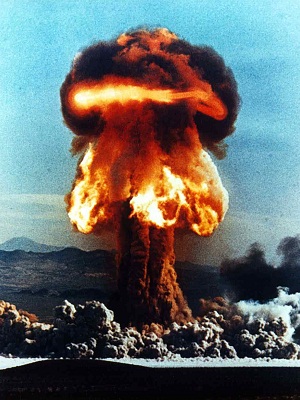 The world has never forgiven metal for being an outsider. Since the dawn of its creation, metal has not gone along with the love songs, hippie values and cheerful oblivion of the rock/pop crowd.
The world has never forgiven metal for being an outsider. Since the dawn of its creation, metal has not gone along with the love songs, hippie values and cheerful oblivion of the rock/pop crowd.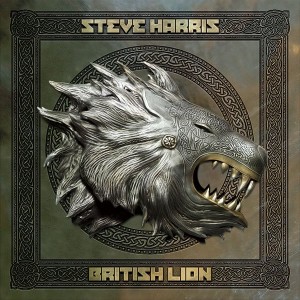
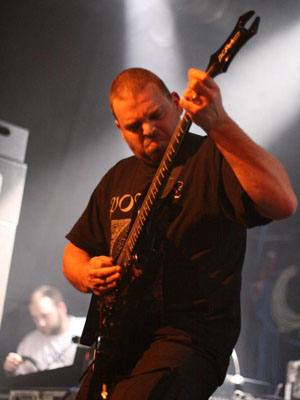 In a time of just about any style being called “black metal” if someone shrieks during the recording, Sammath stay true to the older ideal of powerful, melancholic, evil and naturalistic music.
In a time of just about any style being called “black metal” if someone shrieks during the recording, Sammath stay true to the older ideal of powerful, melancholic, evil and naturalistic music.

 How many copies of The Grimoire do you distribute each month?
How many copies of The Grimoire do you distribute each month? In this movie, do events move according to a script, or is it more of a cut-up format in the style of W.S. Burroughs’ Naked Lunch?
In this movie, do events move according to a script, or is it more of a cut-up format in the style of W.S. Burroughs’ Naked Lunch?
